So, the giddy excitement of discovering you’re pregnant has now been replaced with the reality & responsibility that you are actually growing a new life inside you which you want to protect and nurture at all costs.
You might feel clueless about what to do next. After you’ve pee’d on a stick several times to check the result was really, REALLY positive … you’re left thinking ” I’m pregnant, but now what?”
Having an idea of how to navigate through the NHS maternity system will help you to feel more in control and organised throughout your pregnancy.
Here’s a detailed timeline of what might happen during your 3 trimesters.
I’m pregnant and in my First Trimester
During your first trimester (up to 12 weeks) the joy & excitement might rapidly be replaced with nausea/ vomiting fatigue and tender boobs! All signs that the pregnancy hormone progesterone is flowing. You might talk to your GP, or book a Private viability scan to check that all is well, although it’s best to calculate that you are at least 6 weeks pregnant before booking these early scans, as baby’s heartbeat isn’t visible until this point.
Contact with your NHS
Your GP arranges a local NHS midwife to contact you, and they will take some details about your wellbeing, medical and obstetric history, and any other important information you wish to discuss that might affect the course of your pregnancy. The NHS community midwifery service can sometimes run on skeleton staff, and so it’s likely that this first appointment will be done over the telephone between 8-10 weeks of pregnancy. If you haven’t heard from a midwife by 10-12 weeks, then it’s best to contact your GP as some of the early screening tests offered to you in pregnancy are time critical. They are also optional.
Choosing your birth location
Once you have been introduced to your midwife she will discuss where you would prefer to birth, either home or hospital. At this point many couples are unsure and plump for their local maternity unit/birth centre. It really doesn’t matter at this early stage, as you can transfer to another unit before 28 weeks if you have heard better reports or read better reviews, and of course you can also discuss the option of home birth to determine if there is a home birth service available in your area.
Dating Scans and Blood Tests
Your midwife will then arrange an appointment at your initial chosen hospital, so that a dating scan and blood tests can be arranged. She will also discuss a pregnancy timeline, in terms of how often you will see her and how to contact her if you need advice. Sometimes your midwife takes the blood herself by arranging a visit to her clinic. The blood tests confirm your blood group, check levels to rule out anaemia, check for infections and antibodies and any deviations from the usual. You will also be offered a blood test called a triple test (or quadruple test if you are more than 14 weeks pregnant at booking). These are screening tests for chromosomal conditions such as Down’s syndrome in a baby, and they calculate your risk of having a baby with these conditions. You can read more about screening tests in pregnancy here. The dating scan at the hospital gives you an anticipated due date, and often it is a few days earlier or later than your own calculation. These screening tests are all optional, and it is your choice whether to accept them.
Your midwife will also supply you with an electronic W8 certificate, which entitles you to free prescriptions and dental care for 18 months, so it’s a good time to get your check-up booked.
Your pregnancy pathway
Once you have had your scan & if it is determined that some part of your personal or medical history might impact your pregnancy labour or birth, then a consultant obstetrician or member of their team will see you after the scan and discuss a management plan with you. At this point you will find out if you will be on a midwifery led pathway or consultant led.
With a consultant led pathway it generally means that you will have more checks more scans and more face to face meetings with doctors. Whilst this might be reassuring it also opens you up to discussions about pregnancy risk which some doctors handle better than others. Sometimes you start off on a consultant led pathway but after further tests you are transferred back to midwifery led care.
Midwifery led care means that you might be less likely to require medical intervention when you are due to birth, and is also the route whereby birthing at home or in a birth centre is more likely. However, you are perfectly within your rights to request a home birth even if you are under consultant care, and the consultant midwife at the local hospital will discuss this with you to agree a plan.
Options for support and continued care
Sometimes the option of unassisted birth or free birth, is the only choice that women feel they have.
Most women that decide to free birth know before they are pregnant that they don’t want to engage with the maternity system and may decide to engage the services of a Doula
A Doula is a professional who provides emotional, physical and informational support to new and expectant parents before, during and after the birth. They aren’t clinically trained like midwives but undergo a comprehensive doula training programme before they qualify.
For couples looking to have enhanced antenatal and postnatal support, then hiring an independent (private Midwife) is becoming more popular, as you will then receive continuity of care and develop a deep relationship based on trust.
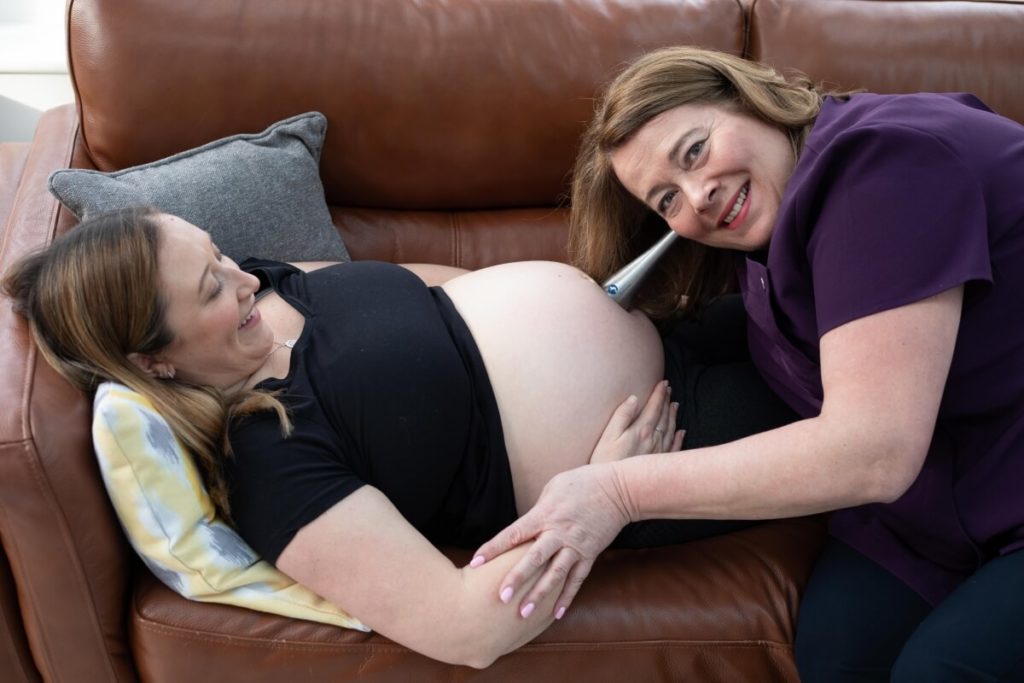
Enhanced care means that you see your independent midwife very frequently throughout pregnancy, and avoid seeing different midwives every time you need an antenatal check. You also have access to a private telephone number and can message or text if you require advice or support.
The presence of an independent midwife or doula at your birth can protect your birth experience, and women tend to have shorter labours with less pain relief and less intervention. Although this is a significant financial investment, having a baby is one of THE most significant things that you will ever do, so it’s definitely worth some consideration.
In essence, the first trimester is a time of discovery. Particularly if it’s your first baby, you’ve never been inside a hospital before and everything is new, exciting and just a little scary too! Once all the screening is completed, your nausea has started to settle a little, and you’ve shared your fabulous news with family friends and work then it’s time to move into the next phase of pregnancy known as the second trimester.
Preparation during the Second Trimester
The second trimester (13-28 weeks), is a time for you to settle into your pregnancy and enjoy the first few flutters, pops and rolls as baby starts to move around inside you. Movements are generally felt around 16-24 weeks of pregnancy or more likely to be after 20 weeks if it’s your first baby.
Your changing body
Your uterus moves up out of your pelvis after 12 weeks, and so this is when you really start to notice your pregnancy bump, and can show it off in all its glory! You might not want to show off your bump and feel anxious that your body is changing shape with the growing pregnancy. This is absolutely fine too as this is YOUR journey, but do seek some help if your anxiety is affecting your emotional wellbeing and speak to your midwife who can arrange for some emotional support for you.
Preparation and learning
This is the time when most women start to buy magazines and books, follow pregnancy and birth thought leaders on social media to try and educate themselves on the roadmap ahead. It is also a time when women look to book their complete hypnobirthing and newborn courses.
As already mentioned, giving birth is one of the most significant things that you will ever do, both in the moment and in its long term effects on your wellbeing as a parent. So put as much thought into choosing a birth course as you do into choosing a stroller.

There are lots of providers of birth preparation, and they all have their own benefits. However, the birthing landscape has changed so much in the last 10 years, that some programmes are no longer serving women as they focus too heavily on natural birth. This leaves many women with feelings of failure and disappointment if their labour and birth deviate from a gentle undisturbed experience, and requires assistance from a group of staff in theatre.
1 in 3 labours are now induced, and it feels like there is an induction epidemic out there, so it’s crucial that your birth preparation prepares you for the challenging discussions you might be faced with when your pregnancy reaches full term. The goal is to take you from a nagging feeling of “fingers crossed” to a secure feeling of being “fully prepared” knowing all of your options and choices, so you remain in the driving seat.
Anomaly Scan
At 20 weeks you are offered another scan known as the midterm or anomaly scan. This is an exciting opportunity to see your baby again, but primarily it is an important scan to check that baby has developed structurally and that everything is as it should be. During this scan, the sonographer will not chat much as they have a checklist to cover as they examine every square inch of baby, and at the end they will go through the scan with you and show you some features and might even be able to tell you about the sex of your baby if you wish. Occasionally the sonographer will not be able to see all the features of baby as they are curled up in your tummy, so a repeat scan will be arranged for a fortnight later. At this scan the position of your placenta is also determined.
Sometimes the placenta is found to be low-lying, but in the majority of cases it will move into a more optimal position, as the uterus stretches with advancing pregnancy. A repeat scan for placental positioning, is usually offered at around 34 weeks. If your placenta is classified as anterior (i.e. on the front wall of your uterus) then this might make it more tricky to always feel baby’s movements in later pregnancy as it’s like having a cushion stuffed up the front of your jumper!
Vaccinations and Tests
You will be offered a whooping cough vaccination after 16 weeks of pregnancy, and it is your choice whether to accept it. You can have the flu vaccination at the same time or anytime up to the birth of your baby again this is your choice. It is now strongly recommended to have the double covid vaccinations in pregnancy, and your booster.
At around 24 weeks, you might be offered a test to see if you have pregnancy (gestational) diabetes. Your midwife will explain this to you as it is offered to women with a family history of diabetes, women in specific ethnic groups, or if you had diabetes in your last pregnancy. If you have gestational diabetes confirmed, then you will be referred to a diabetic specialist midwife at the hospital to talk to you about how to control your blood sugar through diet and exercise, and you will be under consultant care.
Measuring Baby’s Growth
At around 26 weeks your midwife will start to measure your tummy during her visits, to check baby’s growth and will plot this onto a customised growth chart to check that baby is growing as expected. If the measurement is higher or lower than anticipated, a growth scan is organised at the hospital, to confirm the midwives measurements.
Then, in the blink of an eye, you reach 28 weeks and move into the third trimester.
What happens in the The Third Trimester
In your third trimester, 28 – 42 weeks, your pregnancy bump is now pretty obvious and baby is becoming more active. This is when birth preparation really picks up, and you organise baby’s kit and your hospital bag or home birth kit. You also start to think about research, and develop a list of your birth preferences, previously known as a birth plan.
Monitoring Baby’s Movements
Baby’s movements increase exponentially until 34 weeks, and then remain the same until birth as baby starts to develop more muscle tissue and fills the remaining space in your uterus. If your movements are reduced or not the same as usual, then firstly lie on your side for up to an hour and listen to some gentle music whilst focusing your attention on baby (as sometimes when we are busy, baby will be moving, but we don’t feel it). If baby has not moved in this period then call triage at the local hospital, and they will invite you in for a CTG (cardiotocograph) abdominal recording of babies wellbeing. Don’t wait until the morning as the hospital offers a 24-hour service.
Blood Tests and GBS Test
Blood tests will be offered again at your 28-week appointment to check that you are not anaemic. Your body goes into a physiological haemodilution at 28 weeks and this can cause tiredness. For more on anaemia in pregnancy read here. If you have a rhesus negative blood group you will be offered an anti-d injection at 28 weeks, you can read about this here. At 35 weeks you might want to organise a home test swab for group b streptococcus (GBS).
Preparing your body for birth and labour
Once you reach 28 weeks, it’s time to start to sleep on your side, and Tommy’s the baby charity have produced an excellent video on this subject.
At around 34 weeks you can start to work on physical preparation for labour and birth. Developing a routine around pelvic floor exercises is really important at this stage, and will help to prepare your pelvic ligaments to release baby at birth. The brilliant pelvic floor training app called squeezy, is highly recommended as part of your birth preparation.
Using a birth ball will help you to strengthen and lengthen your pelvic ligaments, and using a ball rather than a sofa of an evening can help baby to get into an optimal position for labour.
Other things you can do to prepare are massaging your perineum from 34 weeks at least twice-weekly has been shown to help reduce perineal tears at birth, so it’s a winner in my book!
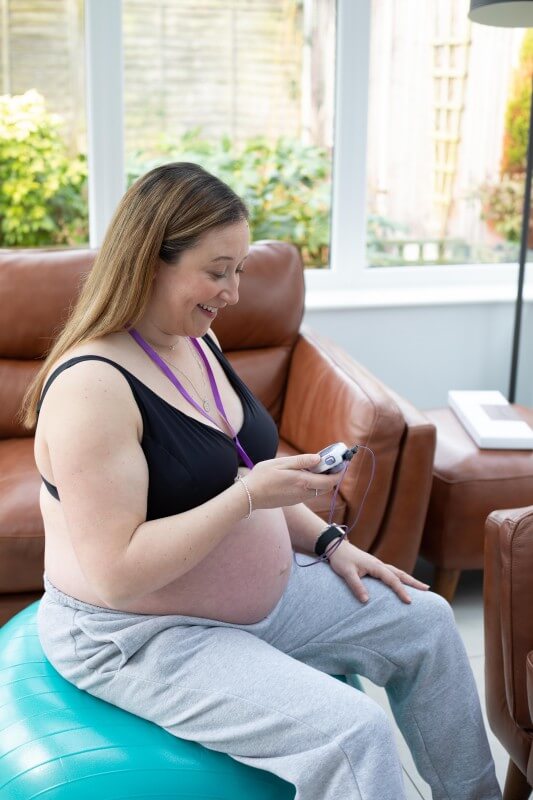
Ready for your due period
By 37 weeks, your birth preparation will ideally be completed and your birth bag or home birth kit are ready to go as you are now in your early term period and baby can arrive any day, so don’t leave things to the last minute if you can help it.
Print out your birth preferences and have them at the top of your birth bag, check that your partner has read them through again, as they will be your best advocate in labour. You may wish to start some antenatal hand expression of colostrum from 37 weeks, and collect this in syringes to freeze for after baby’s birth.
If you are going to use a TENS unit to help with comfort in labour, then now is the time to purchase or hire, so you can try it out before the big day.
Your midwife will continue to measure your tummy at each antenatal visit. Variations in growth are one of the key reasons doctors will jump in and suggest induction in later pregnancy, so prepare yourself for these discussions as they can feel quite pressurised and coercive at times.
At 40 weeks, prepare yourself for the fact that this is the day when baby is LEAST likely to meet you as only 5% of babies are born on their due date; the calculation is based on outdated science.
Understanding your options
At 41 weeks plus 5 days, the hospital will suggest that now is the time for induction of labour to ensure that baby is born around 42 weeks, but this is OPTIONAL!
It is your choice, you can say no and ask for enhanced monitoring, then await spontaneous labour unless there is a very strong reason for induction with irrefutable evidence. The evidence around induction for women who have gone past their due date is not that convincing.
Arrange a private scan, to check fluid levels around baby and the blood flow to and from the placenta, and monitor baby’s movements closely. Agree to a CTG heartbeat recording at the hospital, but stand firm as induction can dramatically change your birth experience. When doctors are encouraging induction they often only discuss the risks of continuing with the pregnancy. They never talk about the impact on you as a mother.
In addition, covid restrictions to visitors in the hospital will mean that your partner cannot join you until labour is established (this process can take up to 5 days from admission) so you will be on your own, unsupported by loved ones.
Think VERY CAREFULLY about agreeing to induction and don’t agree on the spot. Ask for time to think about it and do your own research, or call me and book in a Power hour consultation, so I can help you to prepare for the discussion and get the facts.
Once labour starts, stay at home as long as you can if you are planning a hospital birth, as this early (latent phase) is best managed with your own home comforts around you. Call your midwife or the hospital once the contraction/surges are coming regularly every few minutes, and you cannot talk through them or indeed earlier if you need reassurance.
You’ve done the preparation you have all eventualities covered in your mind now it’s time to meet baby!
Preparation is key
I’ve spent the last three decades supporting women to achieve a positive birth experience. Now more than ever, women need to put themselves into the driving seat to achieve a better birth experience. They need to learn to assess or spot a hazard, swerve or brake safely rather than just having an airbag deployed every time that pregnancy labour or birth deviates from what the hospital expects.
Only with good preparation can you stand up for a birth that you will always remember, rather than one you want to forget.

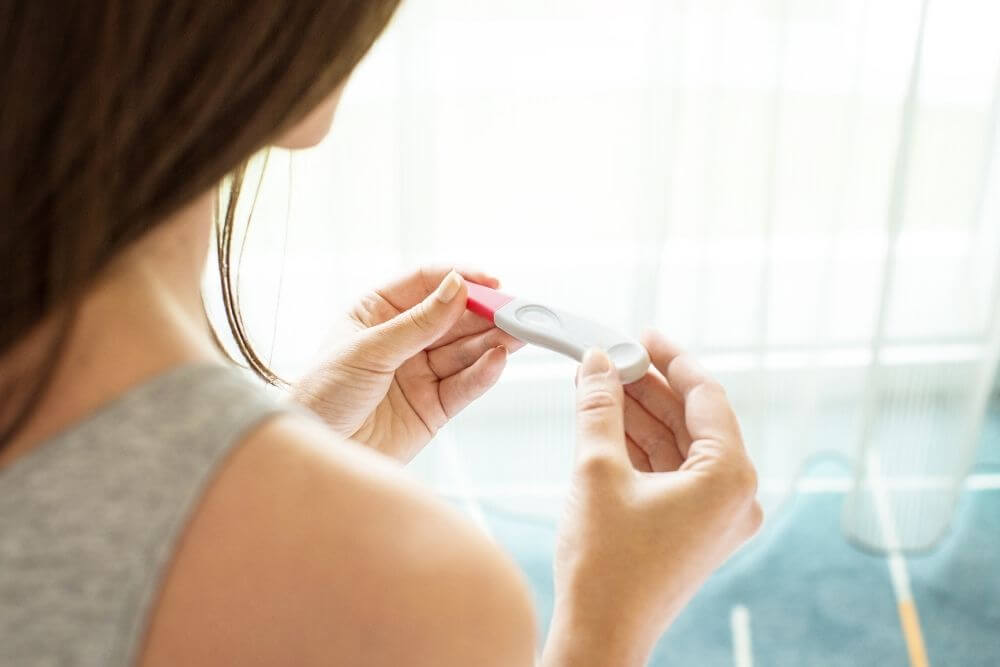







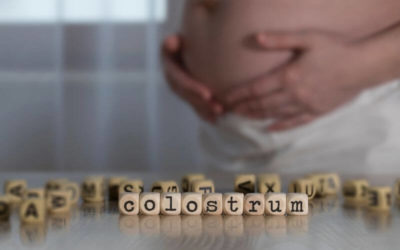
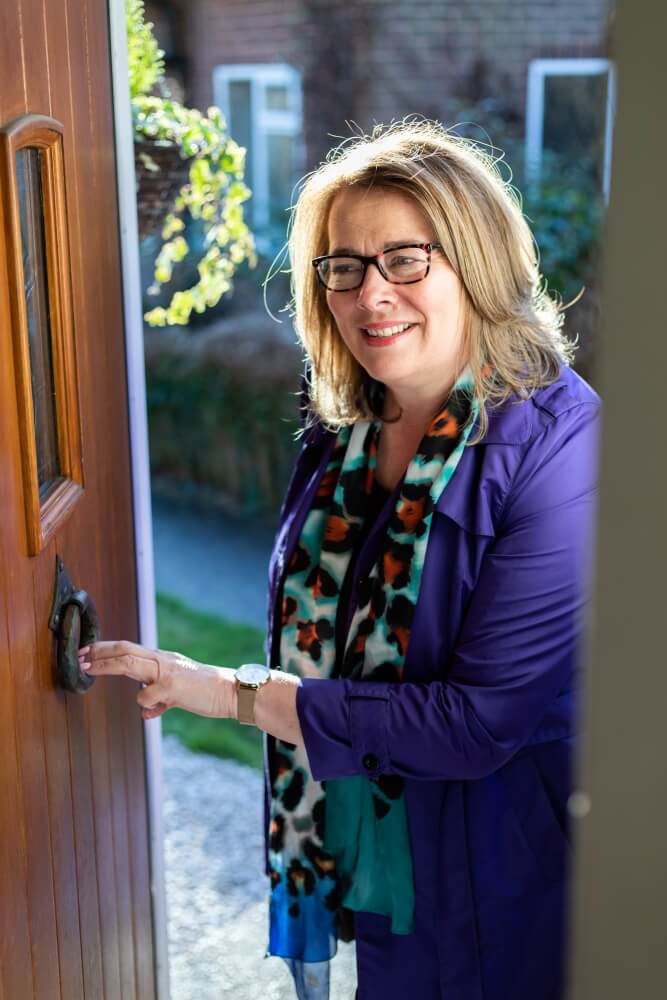

0 Comments